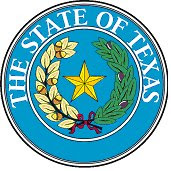The amount of man-made occurrences and natural disasters
continues to climb. It's during these times that electricity, gas and water
supplies aren't functioning. There are also emergency situations where you may
be quarantined to your home, or even evacuated from it. Either way, you
probably won't have access to groceries because most stores will be closed. So,
what will you do? How will you feed your family?
5 Different Ways to Go About Building Your
Food Storage
The best way to ensure that you're able to feed your
family when a disaster strikes is by being prepared with a food storage plan.
Wondering exactly how to get started? Here are five different ways to build
your food storage without breaking your bank:
Buy in Bulk
As you know, anything you buy
in bulk will get you more for your dollar. Buying non-perishables and other
foods in bulk allows you to pay the lowest prices possible, per item. If you do
choose to go this route, be sure to check the expiration dates of your
products. The last thing you want is to have a need for your emergency food
storage just to find out everything has spoiled or turned rotten.
Buy a Little at a Time
In today's economy, it may put
a dent in your finances to buy large quantities of food at one time. This is
especially true with food storage, as these are foods you won't be eating until
a future date. If you're on a strict budget, a good way to build up your food
storage is to buy a little bit at a time. Each time you go grocery shopping;
simply add a few items that will go directly into your emergency food supply.
In time, it will build up to include the amount of products needed for you and
your family's emergency crisis.
Sales & Coupons
Are you a coupon-clipper or
sales-watcher? If so, this is another cost-efficient way to start your food
supply. Let's say you see a 2-for-1 coupon or a sale on a food item you
generally buy. Simply add one to your pantry, and the other to your food
storage. Keep following this procedure on a regular basis and you'll soon have
the food supply you need.
Clean Your Cabinets
Many people don't even think
of this great idea. You'd be amazed at some of the items in your pantry and
kitchen cabinets that would make great additions to your emergency food supply.
Go through them today! If you have two containers of salt, add one to your
storage. Do you see 12 boxes of mac n' cheese. At least six of those can be
stored away for an emergency. Continue this process until you've gone through
all of the duplicate food items in your kitchen.
Freeze Dried Foods
These foods are one of the
best investments you can make towards your emergency preparedness plans. Freeze
dried food is prepared before being flash frozen. That means that they retain
their quality, freshness, look and great taste. The foods also last more than
25 years, giving your family decades of security.
Author Bio
This content was prepared by Dirk Puckett. Daily Bread is
an industry leader in long-term
food storage plans. Ready to begin putting your food storage plan together?
Start here and place your order today.
Be aware. Be informed. Be prepared.
Riverwalker







